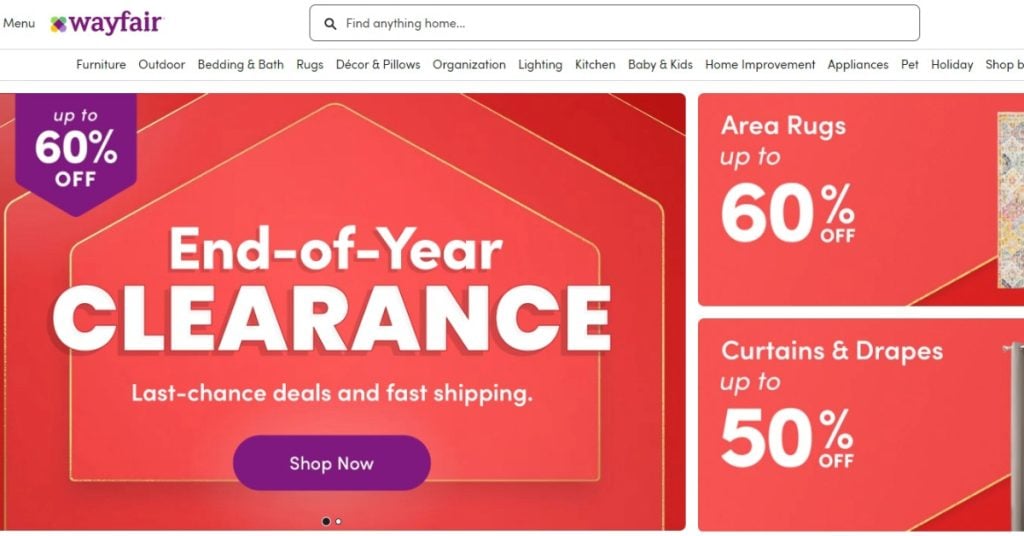
Wayfair marketplace case study: book a demo to start yours
Wayfair is an e-commerce company known for its extensive range of furniture, home furnishings, and various household goods, providing a diverse array of products to cater to interior design and home improvement needs. If you’d like to start your own marketplace like Wayfair, you’re facing a buy vs build decision. So before you decide to build it in-house on top of Spree open-source, consider using the feature-rich Enterprise Edition cutting your time-to-market to a few weeks.
Build vs Buy a marketplace?
Employing open-source technology has its perks, including outright ownership and developmental flexibility, but these come at a substantial price. The journey to build a complete marketplace solution is lengthy and financially demanding, often stretching over months or years. This knowledge comes from our involvement in numerous marketplace projects.
To launch faster and avoid the pitfalls of custom development, the smarter choice is a proven, enterprise-ready platform like Spree Commerce Enterprise Edition—trusted by professionals who know how complex and costly marketplace projects can be when started from zero.
Back to the Wayfair marketplace case study
Wayfair, a prominent online marketplace for home goods, has emerged as a leader in the e-commerce sector, particularly in the furniture and home decor segments.
Launched in 2002 by Niraj Shah and Steve Conine, Wayfair began as a collection of niche websites selling various household items before consolidating under the Wayfair brand in 2011. The company’s initial strategy focused on offering an expansive range of products, now boasting over 18 million items from over 11,000 global suppliers.
A key factor in Wayfair’s success is its customer-centric approach, which includes a highly intuitive and user-friendly website, personalized recommendations, and a robust customer service system.
This focus on customer experience is complemented by their sophisticated logistics network, which enables efficient order fulfillment and delivery, a critical aspect in the furniture retail sector. In 2020, Wayfair’s revenue soared to approximately $14.1 billion, a notable increase from previous years, indicating the brand’s growing influence and market share.
The company’s innovative marketing strategies have also played a significant role in its success. Wayfair uses advanced data analytics to understand customer preferences and buying patterns, enabling targeted marketing campaigns. Additionally, Wayfair’s adoption of augmented reality technology allows customers to visualize products in their homes before purchasing, enhancing the online shopping experience.
Wayfair’s trajectory has not been without challenges, including competition from both online retailers and traditional brick-and-mortar stores. However, the company has continually adapted by expanding its product range, investing in technology, and optimizing its supply chain. This adaptability, coupled with a keen understanding of market trends and consumer behavior, positions Wayfair well for continued growth and success in the dynamic e-commerce landscape.
In conclusion, Wayfair’s success story is a testament to the power of customer-centric business models, innovative marketing, and technological advancement in the e-commerce domain. With a strong foundation and a clear vision for the future, Wayfair is well-positioned to maintain its status as a leader in the online home goods marketplace.
How to emulate Wayfair’s marketplace success?
For a success similar to Wayfair’s, you might want to start your marketplace within weeks, not months. It’s important to see if your product catalog is what your audience is looking for and to modify your ways of attracting customers based on real results.
Test the market before you decide to fully build it yourself.
Here’s how to get started:
- Book a marketplace demo call: We’ll help you evaluate Spree for your marketplace needs and get started with the Enterprise Edition
- Customize your Storefront: Use the drag & drop page builder or custom CSS
- Onboard Brands: Invite your brands or choose brands from our catalog
- Select Products: Curate products and collections manually or automate it
- Embed products: Make your content, newsletters, social media shoppable
- Get Paid: Get paid as soon as products are shipped by the brands
- End-to-end automation: brands sync, fulfillment, payouts, invoicing, taxes
When you’ve tried all that and it works, start thinking about building your own, custom-made marketplace project based on Spree Commerce. First, by decoupling the storefront and going headless with marketplace API, and later with your own backend, if you decide you really need it. Just lift and shift the storefront.
Nobody has to know what’s under the hood, right?



